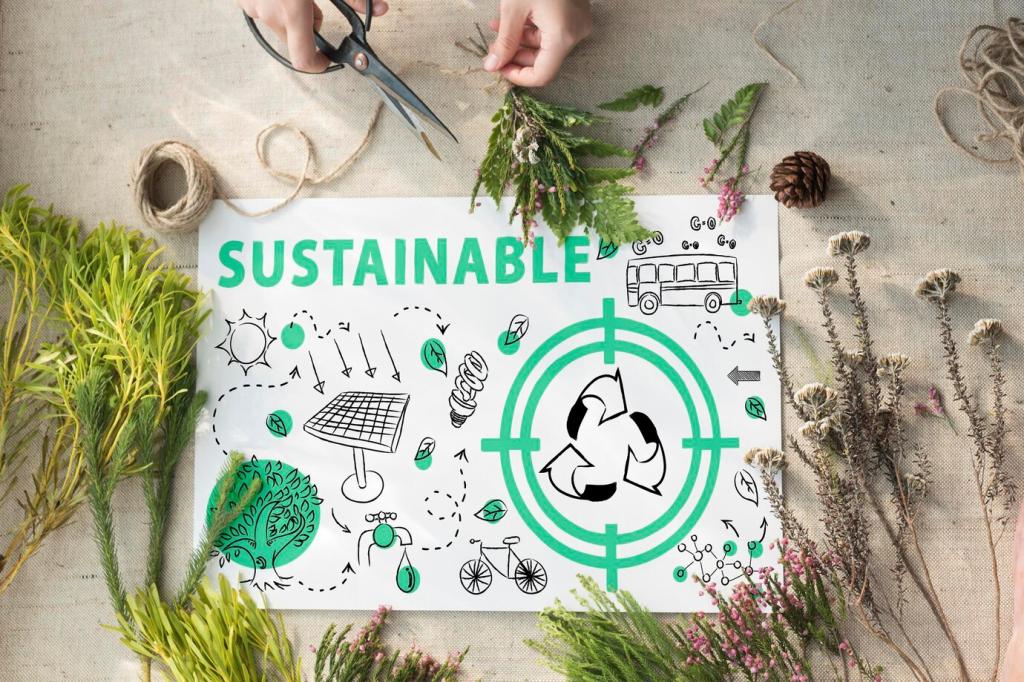
Next-Gen Green Construction: Materials Redefining Architecture
The built environment is undergoing a profound transformation as architects and engineers increasingly embrace green construction materials. These innovative solutions not only address the demand for sustainability, but also redefine what is possible in terms of design, functionality, and environmental responsibility. Next-generation materials challenge traditional paradigms, combining advanced technologies with ecological consciousness to forge a new architectural landscape—one where form, function, and stewardship unite. This new era of green construction promises buildings that are not only visually stunning and durable, but also harmonious with the natural world.
The Evolution of Sustainable Materials
Biocomposites: Strength Meets Sustainability
Biocomposites merge plant-based fibers with modern polymers, yielding materials that offer the resilience of traditional composites with a dramatically reduced ecological footprint. These materials leverage renewable resources such as hemp, flax, or bamboo, binding them with resins that are often biodegradable or derived from waste. The result is a strong, lightweight, and versatile building material that performs admirably in structural and decorative applications. Biocomposites are prized for their low embedded energy, carbon sequestration capabilities, and ability to break down harmlessly at end-of-life. As performance improves, they are becoming integral to sustainable architecture, serving as a testament to what nature and technology can achieve together.
Recycled Content Innovations
Recycled materials are rewriting the lifecycle of building resources, transforming what was once landfill-bound waste into high-performance construction assets. Advances in processing and refinement have enabled the creation of structural elements, tiles, insulation, and more from sources as varied as glass, plastic, and industrial byproducts. These recycled-content materials embody the circular economy, reducing the demand for virgin resources while providing equivalent—sometimes superior—strength and durability. They are also fostering new aesthetic possibilities, allowing architects to incorporate striking finishes and textures. With stringent quality controls and certifications now in place, recycled content innovations are a cornerstone of next-gen green construction, proving that sustainability and performance go hand in hand.
High-Performance Concrete Alternatives
Concrete’s environmental footprint is substantial, primarily due to cement production. Innovative alternatives—ranging from geopolymer cements to bio-based binders—are tackling this challenge head-on. High-performance concretes utilize industrial byproducts such as fly ash, slag, or silicate minerals, reducing emissions and improving durability. Some alternatives even incorporate carbon capture or sequestration techniques, actively offsetting environmental impact. These materials often outperform traditional concrete not just in emissions, but also in strength, resistance to corrosion, and thermal efficiency. This evolution in building foundations and structural cores is pivotal for the future of sustainable construction, enabling architects to design bold, enduring structures with an eye toward both strength and stewardship.
Smart Materials Transforming Performance
Phase-change materials have the remarkable ability to store and release thermal energy as they transition between solid and liquid states. Integrated into walls, ceilings, and flooring, PCMs help to regulate indoor temperatures naturally, reduce heating and cooling demands, and lower operational costs. By shifting thermal loads throughout the day, these materials deliver energy-efficient comfort regardless of external weather conditions. PCMs contribute to passive design strategies and work seamlessly with traditional HVAC systems, often making buildings more resilient to climatic fluctuations. Their application represents a leap forward in efficient energy management, positioning them as essential components of contemporary green architecture.
Low-Carbon and Regenerative Innovations
Carbon-Sink Materials and Negative Emissions
Some of the most ambitious green construction materials are designed to act as carbon sinks, sequestering carbon dioxide during production, installation, and throughout their useful lives. Biochar-infused concrete, cross-laminated timber, and algae-based composites are prime examples. These materials not only prevent carbon emissions but actively reduce atmospheric CO2 levels, offering the promise of negative-emissions buildings. They accelerate climate mitigation efforts by integrating carbon-capture technologies directly into the built environment. As these solutions scale, they are set to become cornerstones of truly regenerative architecture, helping cities become active contributors to planetary health.

Living Building Materials
Living building materials take cues from nature’s own construction methods, employing biologically active organisms like bacteria, fungi, or algae to form, repair, and protect structures. Self-growing bricks, mycelium insulation panels, and algae biofacades contribute not just to material performance but also to enhancing biodiversity and air quality. These materials often require less energy to produce, can regenerate or self-repair, and are naturally biodegradable. They represent a holistic approach to sustainable construction, fostering integration between architecture and the living world. By blurring the lines between building and ecosystem, living materials offer a pathway to truly harmonious green design.

Modular Prefabrication with Green Materials
Prefabrication is transforming construction economics and sustainability by allowing precise off-site manufacturing with minimal waste. Coupled with next-gen green materials, modular construction delivers buildings that are not only fast to assemble but also designed for energy efficiency and recyclability. Components made from renewable, recycled, or easily disassembled materials streamline the life cycle of structures, supporting future reuse and adaptability. Modular systems also facilitate innovative designs that maximize daylight, airflow, and thermal performance. As cities demand rapid, sustainable growth, prefabrication with green materials is emerging as a catalyst for scalable, regenerative urban architecture.
